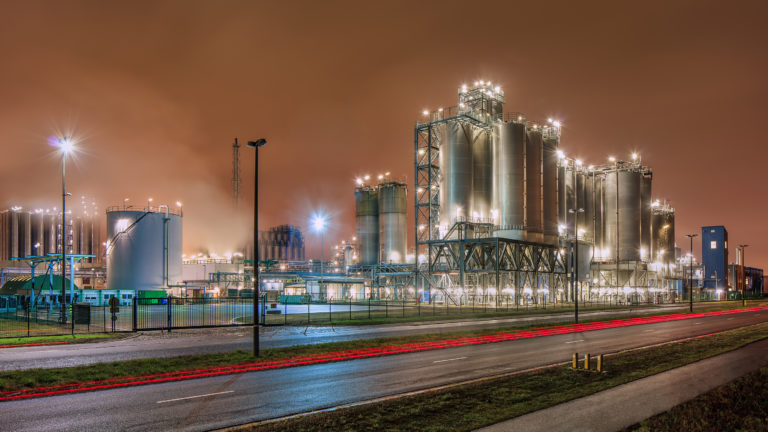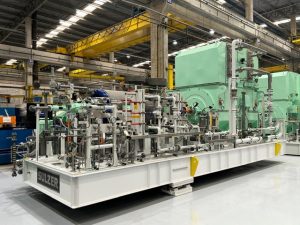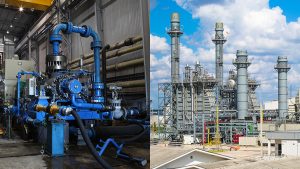Sulzer Completes Repair to Cooling Water Pump in just Seven Weeks

The project was complete in just seven weeks, avoiding any lost production (Image source: Shutterstock - TonyV3112)
Power generation equipment is essential to reducing the operating costs of a chemical plant, which is responsible for creating many everyday products, such as fuel, oils and plastics. Following a planned maintenance schedule improves reliability and reduces downtime, all of which helps to reduce operating overheads and deliver cost-effective products to the consumer.
Challenging circumstances
The failure of one pumping asset can have major implications for large integrated industrial operations. For the owners of a Belgian chemical plant, trouble with a pump meant the plant risked losing its primary source of electrical power and steam.
The problems affected the chemical plant’s on-site power plant, run as a joint venture between the owner and a major European energy provider. The integrated plant supplies the chemical plant with both electricity and process steam in an arrangement that is both efficient and cost-effective.
Recently, however, the power station’s operators faced a worrying situation caused by the failure of a pump in the plant’s cooling water system. Two vertical inlet pumps that deliver cooling water to the plant had been in operation for many years, and the redundant design meant that a single failure would normally allow operation to continue uninterrupted until the next scheduled shutdown. When the second pump started to show high levels of vibration, with the next planned maintenance shutdown still months away, the operators knew it was time to call in Sulzer’s expertise.
First fix
On-site engineers from the power plant removed the 8-meter long broken pump and sent it to the local Sulzer service center in nearby Kapellen. Once there, Sulzer service experts dismantled the unit to assess its condition. The initial inspection quickly revealed that the shaft of the pump was bent and unusable. Worse, the bend had resulted in the open impeller making contact with the pump’s casing, damaging both.
To fully evaluate the task of repairing the unit, the Sulzer team needed to compare the damaged components with an original template. Due to their age, the only design information available for the pumps were 2D drawings. To bring that information up to date, the team used the two-dimensional information to build 3D computer-aided design (CAD) models of the original components. Then, they compared those models to laser-scans created from the broken pump.
The analysis was mixed news for the team. It showed that both parts required replacement, but while the impeller was unusable, the casing could potentially provide a period of additional service.
In close dialogue with the customer, the team agreed a two-stage approach to fix the problem. As a matter of urgency, they would manufacture a new shaft and impeller, then install those components in the original casing to allow the pump to resume backup duties at the plant. Subsequently, they would make a new casing that could be installed during the forthcoming scheduled shutdown.
Speed and quality
Using the new CAD model, Sulzer manufacturing experts in Bruchsal, Germany CNC-machined a pattern for the 650 mm diameter impeller, allowing them to cast and then finish machine the complex geometry of the new part. In situations where speed is so important, Sulzer specialists benefit from the company’s close internal network of experts across Europe to find the best possible solution.
The new impeller was shipped to Belgium where the Kapellen team mounted and balanced it on a new shaft. The replacement parts were installed into the original casing and, after testing, the repaired pump was returned to the plant and craned back into place.
“For a job of this scale and complexity, the normal lead time is around six months,” explains Ben Lauwerijssen, Sulzer Regional Sales Manager. “In this case, we knew our customer was extremely concerned about the potential for lost production. Thanks to close collaboration between different teams within Sulzer and with our customer’s maintenance engineers, we were able to complete the entire project in seven weeks, without any lost production.”
With the new solution installed, the plant operations and maintenance staff were able to turn their attention to assuring the long-term reliability of the cooling water system. Installation of the new casing is already planned for the next scheduled shutdown, as is an overhaul of the second pump. Sulzer specialists are also working with the customer to implement new condition monitoring technology as well as an enhanced maintenance strategy for the pumps.
Source: Sulzer Pumpen (Deutschland) GmbH







